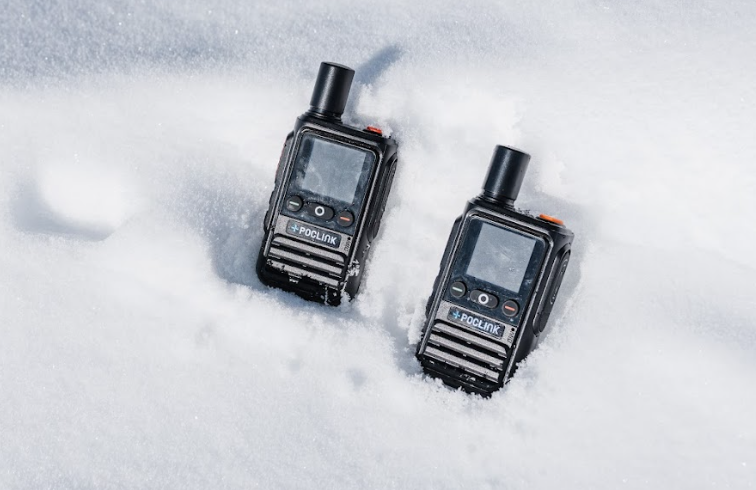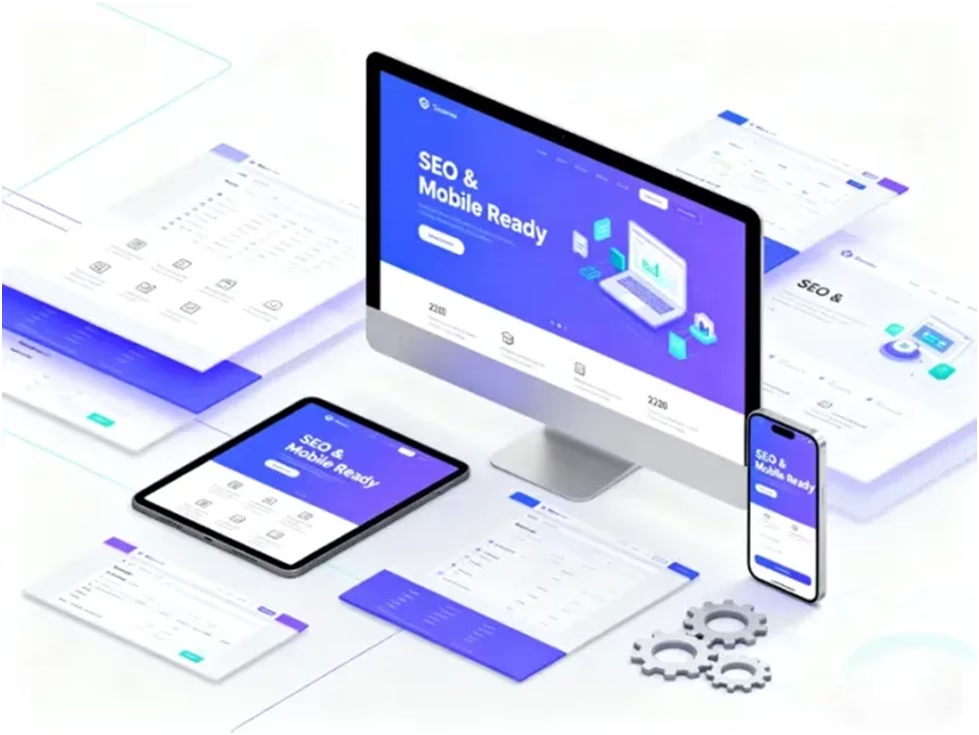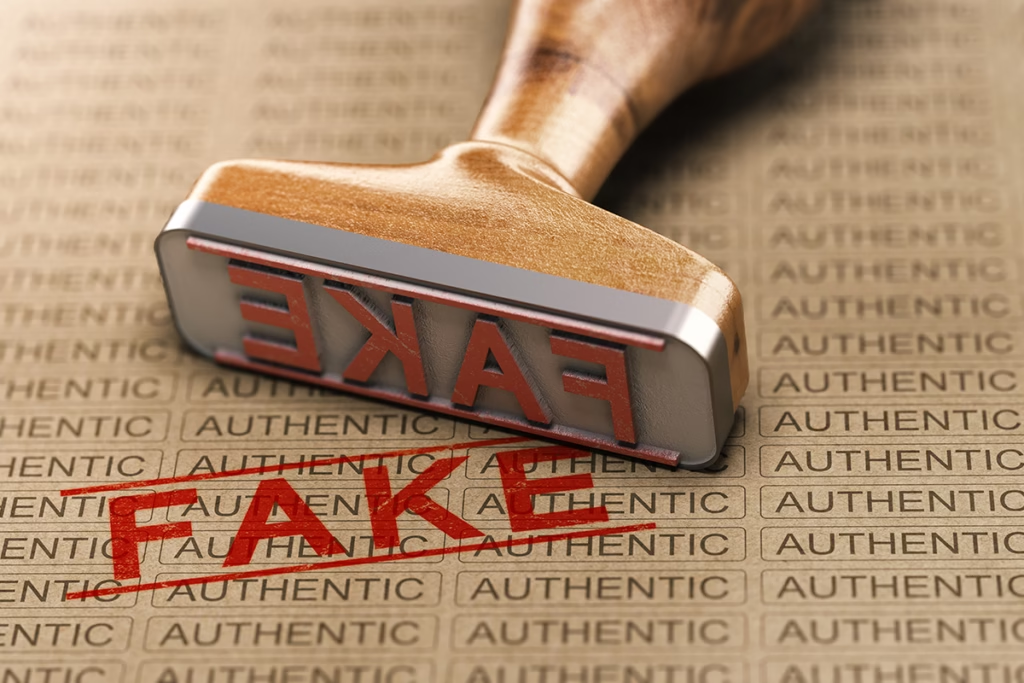When Hurricane Harvey hit Texas in 2017, the Johnson family was trapped in their flooded home for 72 hours. They had no power and no cell service. While their neighbors struggled alone in the dark, the Johnsons stayed connected to emergency updates. They could coordinate their rescue through their emergency radio system. This real story shows why choosing the right emergency radio matters so much.
Choosing the best emergency radio can literally save your life during critical situations. Modern emergency communication has changed dramatically in recent years. Today’s devices offer capabilities that seemed impossible just a few years ago. Understanding these options requires careful thought about multiple factors. Making the right choice for your specific needs is more important than ever.
What Makes the Best Emergency Radio in 2025
NOAA Weather Alerts Your Lifeline to Critical Information
The National Oceanic and Atmospheric Administration (NOAA) Weather Radio broadcasts weather information 24 hours a day. This system comes directly from local National Weather Service offices. The best emergency radio models automatically turn on when they receive emergency alert signals. They work even when the radio is turned off.
Modern emergency radios can decode special technology called SAME (Specific Area Message Encoding). This lets you program alerts for your specific county or region only. You won’t get false alarms from distant areas. You’ll never miss critical local warnings either. Studies show that communities with good NOAA Weather Radio coverage have 30% fewer weather-related injuries.
Alt tag: Family using emergency radio during home power outage with flashlight and weather updates
However, traditional NOAA alerts only give you information one way. They can’t help you tell others where you are. They can’t help you coordinate with family members. They can’t help you ask for help during emergencies. This limitation led to the development of two-way emergency communication systems. These new systems combine weather monitoring with real communication abilities.
Multiple Power Options Staying Connected When the Grid Fails
Power becomes critical during emergencies when electrical grids often fail first. The most effective emergency radios offer several ways to charge. This ensures they work no matter what happens. Hand-crank generators give you unlimited power but require physical work. They also produce limited energy output.
Solar panels offer renewable charging but depend on weather and daylight. Battery backup systems provide reliable power storage. However, they need regular care and replacement. USB charging lets you share power with other devices. But this depends on having available power sources nearby.
Best emergency radio models combine multiple power options. This creates backup systems that ensure communication no matter what. Modern devices like Poclink emergency radios change power management completely. They offer 8-10 day battery life from a single charge. This is much longer than traditional emergency radios that typically work for 12-24 hours only.
| Power Source | Duration | Pros | Cons |
| Hand Crank | Unlimited | Always available | Requires physical effort |
| Solar Panel | Weather dependent | Renewable energy | Needs sunlight |
| Battery | 12-24 hours (traditional) | Reliable power | Needs replacement |
| USB-C | Variable | Fast charging | Needs power source |
| Poclink Battery | 8-10 days | Extended operation | Initial investment |
Communication Range Breaking Distance Barriers
Traditional emergency radios work on set frequency bands with limited transmission range. Two-way radios typically provide 1-5 mile communication range under perfect conditions. In cities or challenging terrain, this drops to several hundred yards. These distance limits can be deadly during emergencies. Family members or rescue teams often work beyond signal range.
Weather conditions affect traditional radio communication a lot. Mountains, buildings, and atmospheric conditions can completely block signals. This happens even when transceivers are separated by short distances. Emergency situations often happen when these environmental factors create the biggest communication challenges.
Revolutionary emergency communication systems now go beyond these traditional limits entirely. Poclink emergency radios provide unlimited global communication range through cellular network integration. This technology removes distance restrictions that have always limited emergency communication. You can contact family members no matter how far apart you are.
Durability and Weather Resistance Built for Extreme Conditions
Emergency equipment must work reliably under extreme conditions when regular devices fail. Industry-standard IP (Ingress Protection) ratings show resistance to dust and water. IP67 ratings provide complete dust protection and temporary water resistance. However, ratings alone don’t guarantee real-world performance under emergency stress.
Temperature extremes pose big challenges for electronic emergency equipment. Standard consumer electronics typically work within 32°F to 104°F temperature ranges. Emergency situations often involve more extreme conditions. Professional emergency radios must work reliably from -4°F to 140°F. This handles winter storms, desert conditions, and fire-related emergencies.
Poclink emergency radios work reliably from -4°F to 140°F. This significantly exceeds standard consumer device capabilities. Rugged ABS construction provides impact resistance against drops and rough handling. This durability ensures reliable operation when other devices fail due to environmental stress.
Next-Generation Emergency Communication Radio
Poclink represents a fundamental evolution beyond traditional emergency radio limitations. It provides unlimited global communication range through advanced cellular network integration. This device eliminates distance restrictions that have historically constrained emergency communication. You can contact family members regardless of how far apart you are geographically.
Unlike traditional radios limited by broadcast tower proximity and atmospheric conditions, Poclink operates differently. It works through partnerships with 99% of global network operators. This comprehensive coverage ensures communication capability even when local cellular towers experience damage or overload.
The system automatically switches between available networks. This maintains connection reliability during infrastructure challenges. The device includes GPS tracking functionality. This allows family members to monitor each other’s locations during emergencies. AES and end-to-end encryption ensure communication privacy and security.
| Feature | Traditional Radio | Poclink Radio |
| Communication Range | 1-5 miles | Unlimited Global |
| Power Source | Multiple basic | USB-C + 8-10 day battery |
| GPS Tracking | No | Yes |
| Encryption | No | AES + End-to-end |
| Group Communication | Limited | Up to 200 people |
| Service Cost | One-time | First year free, then $29-99/year |
Best Emergency Radio for Different Scenarios
Home Emergency Preparedness
Power outages during severe weather events often last 24-72 hours. During this time, family members may become separated between work, school, and home locations. Traditional landline phones typically fail during extended power outages. Cellular networks become overwhelmed or damaged during widespread emergencies. Emergency radios provide critical communication backup, but effectiveness depends heavily on chosen technology.
Best emergency radio systems like Poclink excel in home preparedness scenarios. They maintain family communication regardless of local infrastructure status. Parents can monitor children’s locations through GPS tracking. They can coordinate family reunion plans through unlimited-range communication. The 8-10 day battery life ensures extended operation throughout prolonged emergency situations.
Cost analysis reveals significant advantages over traditional emergency communication approaches. Premium traditional emergency radios cost $100-150 with limited functionality. Poclink provides comprehensive emergency communication for comparable initial investment. The first year of service costs nothing. Subsequent years require only $29-99 annually depending on coverage needs.
Outdoor Adventures and Camping
Remote outdoor locations present unique communication challenges. Cellular coverage remains sparse or nonexistent in many areas. Traditional two-way radios provide limited range communication suitable for close activities. They fail during separation scenarios common in hunting, hiking, or camping adventures. Emergency situations in remote areas often prove fatal due to communication isolation.
Mountain rescue statistics show alarming trends. Traditional emergency radios cannot transmit location information. They cannot coordinate rescue efforts either. This leaves outdoor enthusiasts dangerously isolated during medical emergencies, severe weather, or navigation challenges.
Poclink emergency radios transform outdoor safety through global communication capability. Users can maintain contact with family members, emergency services, and fellow adventurers. This works regardless of remote location isolation. GPS tracking enables automatic location sharing with designated contacts. This facilitates rapid rescue coordination when situations deteriorate.
Professional and Business Applications
Construction sites, remote work locations, and industrial facilities require reliable communication systems. They need this for both routine coordination and emergency response. Traditional radio systems often suffer from range limitations and interference issues. Licensing requirements complicate implementation and maintenance.
Safety regulations increasingly require reliable emergency communication systems at remote work locations. OSHA guidelines emphasize the importance of emergency communication capability. Poclink emergency radios provide comprehensive business communication solutions. They don’t require licensing or infrastructure development costs. The encrypted communication ensures sensitive business information security. Group communication capability supports up to 200 simultaneous users. This accommodates large-scale operations and emergency response coordination.
Emergency Radio Buying Guide How to Choose
Essential Features Checklist
Modern emergency preparedness requires communication devices that go beyond traditional radio receiver limitations. NOAA weather alerts provide critical information reception. However, they cannot facilitate family coordination or emergency response communication. Two-way communication capability enables active participation in emergency situations rather than passive information consumption.
Multiple power source availability ensures operation continuity regardless of infrastructure status. Hand-crank, solar, battery, and USB charging options provide backup against power grid failures. These failures are common during emergencies. However, power source diversity means little without adequate battery capacity for extended emergency operation periods.
Essential Features Checklist:
- ✅ NOAA Weather Alerts
- ✅ Multiple Power Sources
- ✅ Two-Way Communication (recommended)
- ✅ GPS Tracking (modern requirement)
- ✅ Encryption Security
- ✅ Global Coverage
- ✅ Extended Battery Life
- ✅ Group Communication Capability
Budget Planning Strategy
Emergency communication investment should reflect the critical nature of disaster preparedness. Don’t focus solely on initial cost considerations. Budget emergency radios under $50 provide basic weather information reception. However, they lack communication capabilities essential during actual emergencies. These devices work adequately for weather monitoring but fail during communication-critical emergency scenarios.
Mid-range emergency radios costing $50-150 offer enhanced features and improved reliability. However, they remain constrained by traditional technology limitations. These devices provide superior build quality and additional features. Yet they cannot overcome fundamental range and communication capability restrictions. Investment at this level provides incremental improvement without addressing core emergency communication challenges.
Modern emergency communication systems require higher initial investment but provide comprehensive capability that justifies the cost differential. Best emergency radio systems like Poclink offer unlimited communication range, extended battery life, GPS tracking, and encryption security. The initial costs are comparable to premium traditional radios. The first year of service includes no additional charges. Subsequent service costs remain significantly below monthly cell phone expenses.
| Budget Range | Device Type | Capabilities | Best Use Case |
| Under $50 | Basic Weather Radio | NOAA alerts, AM/FM | Light emergency prep |
| $50-150 | Advanced Traditional | Multiple bands, solar charging | Serious preppers |
| Modern Investment | Poclink Radios | Global communication, GPS, encryption | Complete emergency readiness |
Common Purchasing Mistakes
Many emergency preparedness enthusiasts focus exclusively on weather information reception. They ignore two-way communication requirements completely. This approach leaves families equipped with excellent weather monitoring. However, they have no capability for coordination, status updates, or assistance requests during actual emergencies. Weather information alone cannot substitute for active communication capability during crisis situations.
Battery life considerations often receive inadequate attention during emergency radio selection. Traditional emergency radios typically provide 12-24 hours of operation. They require frequent recharging during extended emergency situations. This limitation forces dangerous ventures outside during severe weather for charging activities. It can also result in communication capability loss precisely when needed most.
Coverage range limitations receive insufficient consideration during emergency radio evaluation. Local area communication capability proves inadequate when family members become separated by distances exceeding traditional radio range. Regional disasters often require communication capability spanning multiple states. This renders short-range devices completely ineffective for family coordination purposes.
Real User Experiences What People Say
Traditional Emergency Radio Limitations
Emergency preparedness forums consistently report frustration with traditional emergency radio limitations during actual emergency situations. Users describe feeling helpless despite having weather information. They cannot communicate with separated family members or coordinate assistance.
Wildfire evacuees note similar experiences where traditional emergency radios provided fire progress updates. However, they offered no capability for family coordination during chaotic evacuation scenarios. Parents separated from children during school evacuations described the terror of having information without communication capability. These real experiences highlight the critical gap in traditional emergency radio technology.
Poclink User Success Stories
Poclink users report dramatically different emergency experiences. They cite the peace of mind that comes from unlimited communication capability. Families describe maintaining contact during power outages, severe weather events, and evacuation scenarios. These situations would have left them isolated with traditional emergency equipment.
Construction industry professionals praise Poclink’s reliability for remote site communication and emergency coordination. Safety managers report improved emergency response times and coordination capabilities. These enhance worker safety in challenging environments. The encryption capability addresses industry concerns about communication security and business information protection.
Outdoor recreation enthusiasts describe Poclink as transformative for wilderness safety. It enables family communication from remote locations previously considered communication dead zones. The GPS tracking capability provides family members with location awareness. This improves safety planning and emergency response coordination significantly.
User Testimonials:
“During the Texas freeze, our Poclink kept our family connected when cell towers failed. We could coordinate warming center locations and check on elderly relatives across the state.” – Sarah M., Dallas
“As a construction foreman, Poclink has revolutionized our site safety. Workers can instantly communicate emergencies from anywhere on our remote projects.” – Mike R., Colorado
Best Emergency Radio Our Final Recommendations
Best Overall Poclink Emergency Communication Radio
Poclink redefines emergency communication standards by eliminating fundamental limitations. These limitations have constrained traditional emergency radios for decades. Unlike conventional devices restricted to local broadcast reception and limited-range transmission, Poclink provides unlimited global communication capability. This works through comprehensive cellular network integration.
The device combines traditional emergency radio functions with modern two-way communication, GPS tracking, and encryption security. This comprehensive approach addresses real-world emergency communication needs. It doesn’t limit users to passive information reception only. The 8-10 day battery life ensures extended operation throughout prolonged emergency situations.
First-year service inclusion eliminates additional costs during the critical initial period. Subsequent service plans starting at $29 annually provide affordable long-term emergency communication capability. The investment provides comprehensive family emergency communication for costs significantly below typical monthly cellular service expenses.
Why Poclink Wins:
- ✅ Unlimited global communication range
- ✅ 8-10 day battery life
- ✅ GPS tracking and location sharing
- ✅ AES encryption security
- ✅ Group communication up to 200 people
- ✅ First year service included free
- ✅ Annual service from $29-99
- ✅ Works with 99% of global networks
Best for Outdoor Adventures: Poclink Emergency Radio excels in wilderness and remote location scenarios where traditional radios fail completely. The global communication capability and GPS tracking provide safety features essential for serious outdoor enthusiasts. It also works for professional remote work applications.
Best for Comprehensive Family Preparedness: Poclink Emergency Radio addresses every aspect of family emergency communication needs. The combination of unlimited range, extended battery life, GPS tracking, and group communication capability provides complete emergency preparedness in a single device.
Take Action Prepare Before Disaster Strikes
Evaluating your family’s emergency communication needs requires honest assessment of geographical distribution during typical daily activities. Consider work locations, school locations, and travel patterns that could separate family members during emergency situations. Traditional emergency radios cannot facilitate communication across these realistic separation distances during actual emergencies.
Best emergency radio systems like Poclink provide comprehensive emergency communication solutions. They address real-world family coordination challenges during crisis situations. The combination of unlimited communication range, GPS tracking, group communication capability, and extended battery life creates complete emergency preparedness. Traditional devices cannot match this level of comprehensive protection.
Don’t wait for the next disaster to discover the limitations of inadequate emergency communication equipment. Visit Poclink.com today to explore detailed specifications, service plan options, and customer testimonials. Learn from families who have experienced the peace of mind that comes from comprehensive emergency communication preparedness.
The next emergency won’t wait for you to be prepared. Make sure your family has the communication tools they need to stay safe and connected when it matters most.





